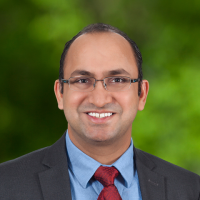For 13 years, Catherine lived with undiagnosed Atrial Fibrillation (AFib), a condition associated with stroke risk. Symptoms such as irregular heartbeat, shortness of breath and fatigue manifested sporadically, sometimes with months in between.
“Every other month or so I felt my heart fluttering and I was out of breath and unusually tired. Because it wasn’t consistent, I thought it was anxiety, not a heart issue.”
However, when AFib occurred before a scheduled colonoscopy, it led her to the emergency room for stabilization. Following the incident, her primary care physician prescribed daily low-dose aspirin as a blood thinner, which Catherine occasionally forgot to take.
On June 20, 2023, she was feeling worse and her health took a significant dive. “Despite not feeling any pain, my intuition was telling me something wasn’t right. I was completely drained of energy.”
During a visit to a friend, Catherine found herself unable to move her left arm and leg, leading to a fall. Fortunately, she was just seven minutes away from Sutter Medical Center in Sacramento, where she was promptly diagnosed with a stroke. She was treated by Dr. Manoj Mittal, a stroke and neurocritical care specialist with Sutter Medical Group, using intravenous thrombolytics to break up clots, plus a thrombectomy – surgery to remove a blood clot – was organized emergently to unblock her brain’s blood vessels.

Afib (atrial fibrillation) is a type of arrhythmia, or abnormal heartbeat, often involving irregular and often rapid heart beats. It occurs when the two upper chambers of the heart, the atria, beat chaotically and irregularly, out of coordination with the two lower chambers, the ventricles. This can lead to poor blood flow to the rest of the body, and can potentially increase the risk of stroke, heart failure and other heart-related complications. By contrast, a healthy heartbeat involves regular contraction of the heart muscle.
Time is Crucial in Stroke Management
“Catherine’s decision to call 9-1-1 was a lifesaver. Time is critical during a stroke. If blood thinners are administered within four and a half hours and brain blood vessels are cleared within six hours, we can potentially reverse or avert fatal stroke outcomes,” Dr. Mittal explained. “With every minute that treatment is delayed, approximately 2 million neurons are lost.”
A month post-stroke, Catherine’s recovery has been remarkable. Having regained full use of her affected limbs, she’s able to resume her normal activities with renewed energy. Moreover, she’s made significant lifestyle and dietary modifications, such as reducing sodium intake, consuming fresh foods, closely monitoring physical symptoms, and taking her prescribed blood thinners consistently.
Culture & Communication
Catherine explained her cultural inclination as a Latina to put others’ needs before her own, which, she believes, contributed to her health situation. As a Spanish translator before her 2016 retirement, she often worked with women who overlooked their health while taking care of others.
She stressed the necessity of a healthcare system that fosters language inclusivity and cultural understanding.
“There’s such a big gap in language and understanding. It’s really important our healthcare system makes an effort to communicate with patients without making them feel they are to blame for their health issues,” said Catherine. “Of course, there are also barriers beyond communication like access to information, financial and informational resources and pathways to care,” she added. “ Some patients are more trusting and comfortable talking to healthcare professionals who share similar cultural backgrounds, and who look like them. I’m glad to see an effort to train and recruit more healthcare professionals from different backgrounds and ethnicities. It really makes a difference.”
Preventative Measures and Management of Stroke Risk
Dr. Mittal suggests that patients with palpitations, shortness of breath, fatigue and generalized weakness, consider using an Apple watch equipped with the AFib app to monitor their heart rate for signs of AFib.
“Doctors should actively screen patients for stroke risk, emphasizing the severity of risk factors and potential imminence of stroke,” Dr. Mittal advised.

Dr. Manoj Mittal is the Medical Director of Stroke and Neurocritical Care at Sutter Medical Center in Sacramento.
The CHA2DS2-VASc score, a common screening tool, can help estimate the stroke risk in people with AFib. It can determine whether treatment with blood thinners is needed to prevent the formation of heart blood clots that could cause a stroke. Many people with multiple risk factors such as hypertension, diabetes, smoking, high cholesterol, obesity, or a sedentary lifestyle don’t necessarily feel ill. And, having had a previous stroke increases the risk of a future stroke by fourfold.
“Patients must never ignore sudden changes in the body, such as difficulty finding words, numbness or weakness, vision changes, memory loss, confusion or severe headache,” Dr. Mittal stressed.
If you have AFib and are at higher risk for stroke, talk to your primary care physician or cardiologist about your risk factors and the need for blood thinners, and always take your medication as prescribed.
Treating heart rhythm disorders at Sutter Health. Learn more.





